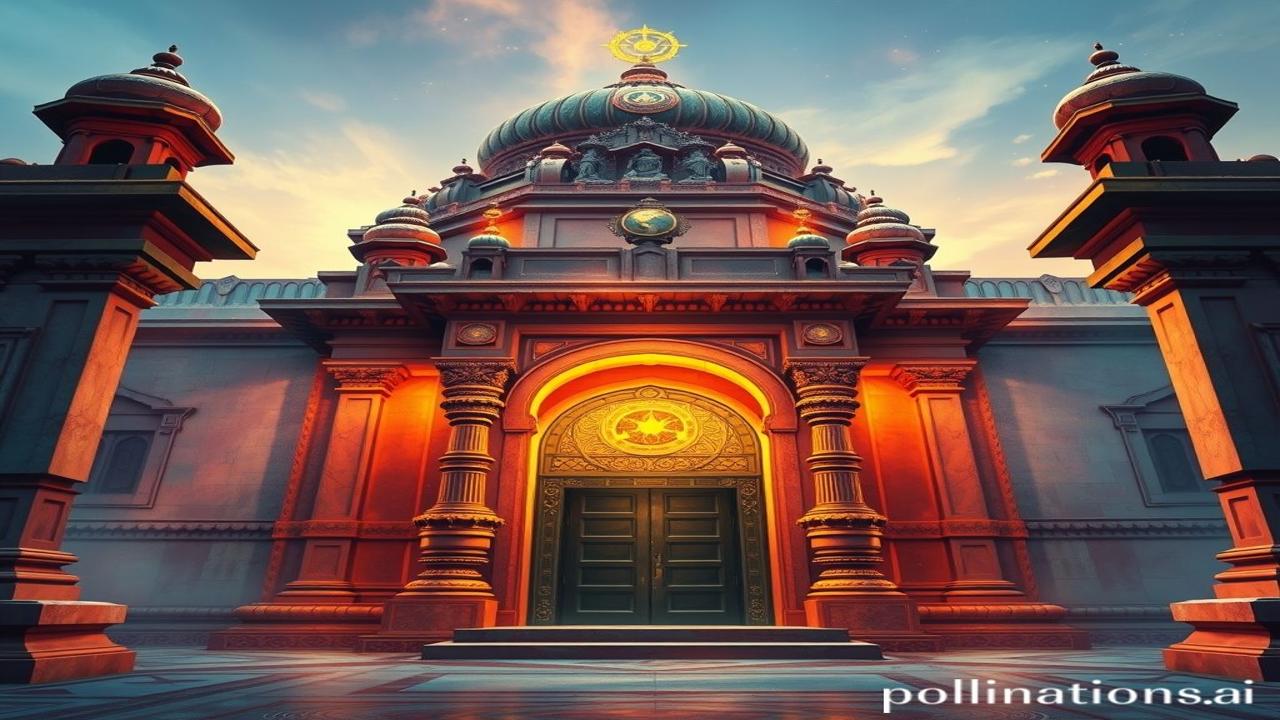Aasman Ki Kahani, Pattharon Ki Zubani: Astronomical Elements in Indian Architecture
Kabhi socha hai, chaand ki roshni kaise mandir ke shikhar ko chhoo kar, aatma ko shanti deti hai? Waqt ki dhool mein dabi, hamare poorvajon ne aakash ki rahasyamayi duniya ko apni imaraton mein utara tha. This is the story of how the cosmos danced its way into the very heart of Indian architecture.
Itihasic Bhoomika: When the Stars Met the Stone
Indian architecture has always been more than just bricks and mortar. It’s a reflection of our understanding of the cosmos, a dialogue between the earth and the sky. Since the times of the Indus Valley Civilization (around 3300-1700 BCE), we find evidence of sophisticated knowledge of astronomy and its incorporation into urban planning. The orientation of cities, the alignment of temples, and the placement of specific structures – all were meticulously planned according to celestial events and astrological beliefs.
Why? Because, in ancient India, astronomy (Jyotisha) wasn’t just about predicting eclipses. It was intricately linked to spirituality, agriculture, and the very cycle of life. Kings relied on astrologers to choose auspicious dates for coronations, battles, and building projects. The precise alignment of structures with the sun’s solstices, equinoxes, and the movement of planets was believed to bring prosperity, harmony, and divine blessings. The Surya Siddhanta, a key Sanskrit text on astronomy, played a significant role in these architectural calculations.
Zameeni Sach: Log Aur Jeevan – Crafting the Cosmic Canvas
Imagine the life of an artisan in the Mauryan Empire (322-185 BCE). With rudimentary tools, but profound knowledge, he’d spend months, even years, carving intricate astronomical symbols onto temple walls. Picture a sthapati (architect) discussing the perfect orientation of a temple with a royal astrologer, ensuring that the first rays of the rising sun during the winter solstice illuminate the deity’s idol.
“Maharaj,” the sthapati might say, wiping sweat from his brow, “agar hum mandir ko thoda aur purab ki taraf modein, toh sooraj ki pehli kiran devta ko sparsh karegi. Yeh shubh hoga.”
Or consider the life of a farmer, whose calendar was dictated by the celestial movements. Festivals like Makar Sankranti, celebrating the sun’s northward journey, were deeply ingrained in agricultural practices and celebrated with fervor. The temple wasn’t just a place of worship; it was a living calendar, a reminder of the interconnectedness of nature and human existence. Ma Rukmini ne aaj naye kapde pehne, kyunki mandir mein Makar Sankranti ka utsav tha…
Dharohar Aur Pehchan: Cosmic Echoes Today
Even today, the astronomical principles embedded in our ancient architecture continue to resonate. The orientation of many modern homes and buildings still follows Vastu Shastra, which draws heavily from astronomical knowledge. Festivals like Diwali, linked to the lunar calendar, dictate our celebrations and cultural practices. The echoes of these cosmic connections can be seen in the intricate designs of rangolis during festivals, which often depict celestial patterns.
Bharatiyata is inextricably linked to this understanding of the cosmos. It reminds us that we are not separate from the universe but an integral part of it. It shapes our worldview, emphasizing harmony, balance, and the cyclical nature of life.
Mazedar Tathya Ya Bhram-Bhanjak: Busting Astronomical Myths
Log samajhte hain ki vastu shastra sirf ghar ki direction ke bare mein hai. Lekin asli sach yeh hai ki vastu shastra deeply connected hai to astronomical observations. It’s a science that combines astronomy, astrology, and architecture to create spaces that are in harmony with the cosmos. Also, many believe the Taj Mahal is purely a symbol of love. While that’s undeniably true, its design incorporates astronomical elements like the four minarets representing the four cardinal directions and their relation to the movement of the sun.
Drishya Aur Bhavnayein: A Sensory Journey
Imagine standing at the entrance of the Konark Sun Temple in Odisha. The air is thick with the scent of the sea and the warmth of the sun. The massive stone chariot, dedicated to Surya, the sun god, seems to radiate energy. The temple walls, carved with intricate depictions of celestial bodies and mythical creatures, tell stories of cosmic battles and divine encounters. The rhythmic sound of waves crashing against the shore blends with the chanting of mantras, creating an atmosphere of profound spiritual connection. Woh patthar ki ghodi ab bhi sooraj ki taraf dekh rahi hai…
Antim Vichar Ya Uddharan: A Cosmic Reflection
As they say, “Yatha pinde tatha brahmande” – “As is the individual, so is the universe.” Our ancestors understood this interconnectedness, weaving the cosmos into the very fabric of their lives and their architectural masterpieces. These structures stand as a testament to their profound wisdom, reminding us to look up at the sky and remember our place in the grand cosmic drama.
